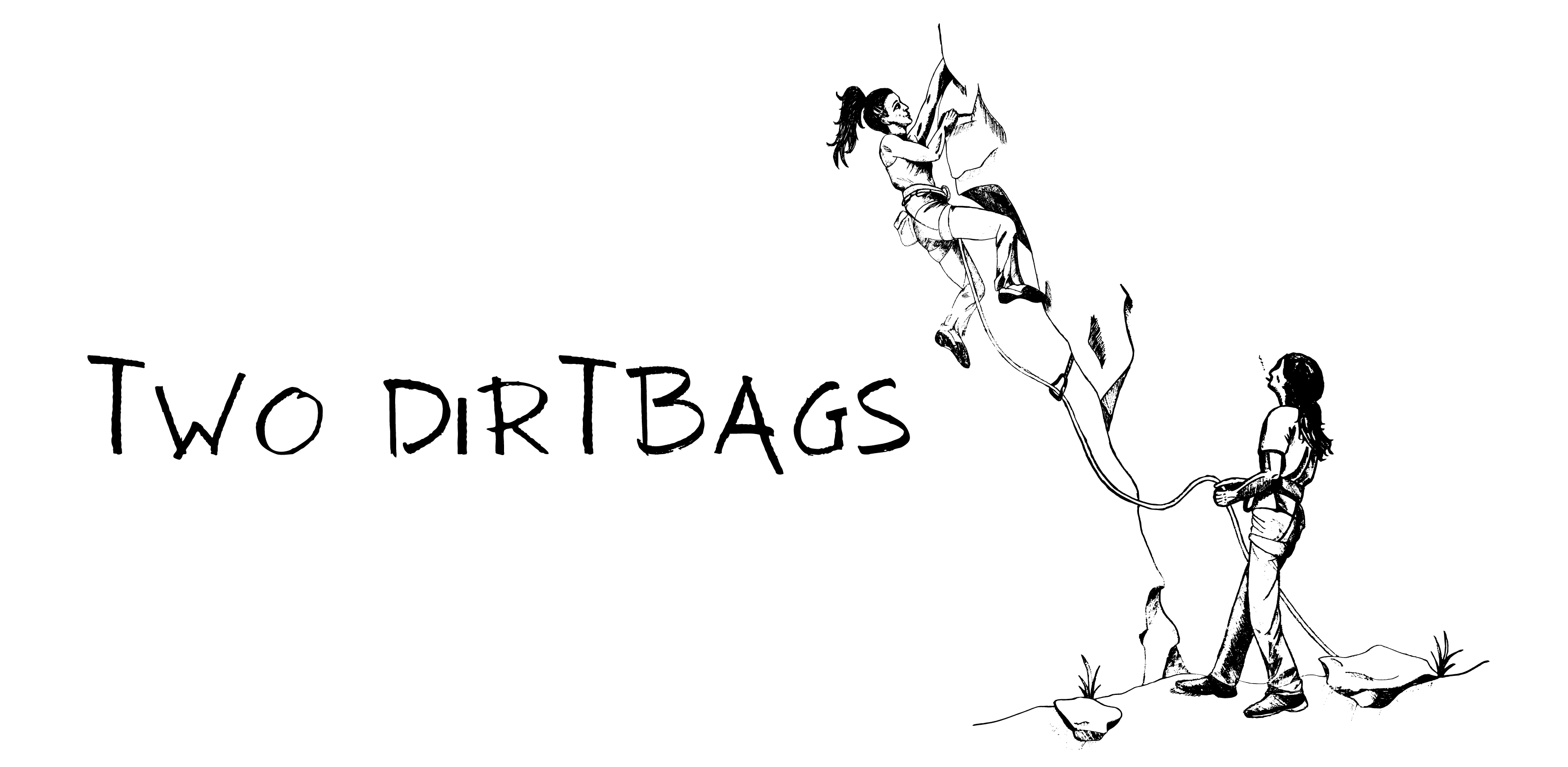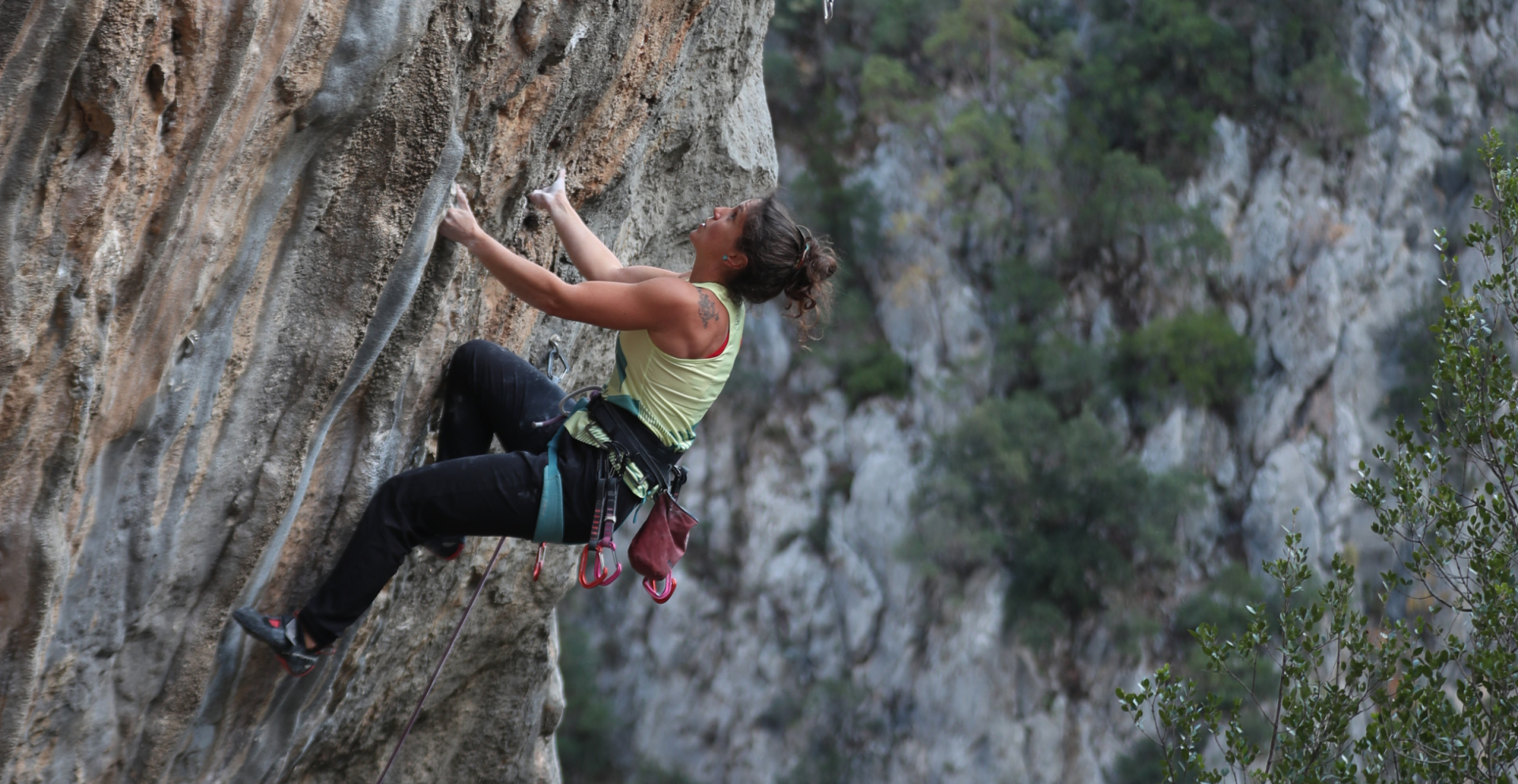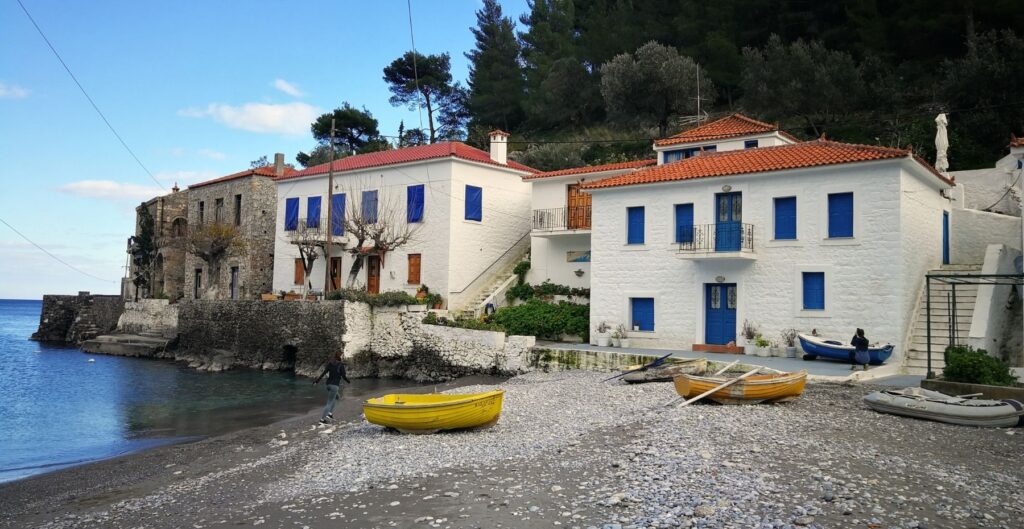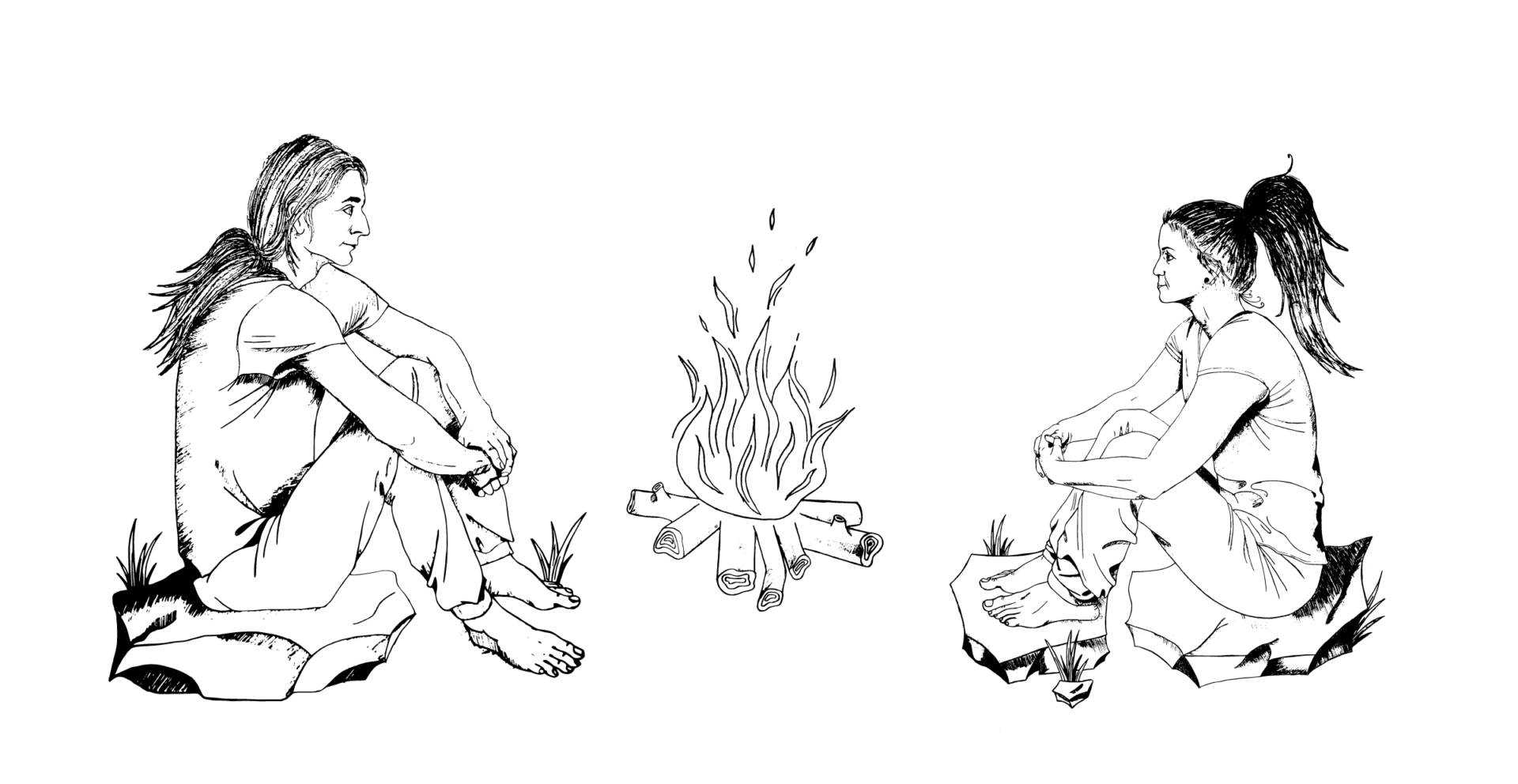
Can it be done? Of course; but it ain’t easy. True, combining rock climbing and rope access comes with both pros and cons, as you’ll see further down in this article. But when done just right, people who have a physically demanding job can commit to a climbing lifestyle, too. They may even have an upper hand.
Are you afraid that physical work might get in the way of your climbing? I was, too. It took me many years to figure out what works for me and to finally see that my body feels good when it moves. Also, the stories I tell myself play a pivotal role in both. Once I realized that, the pieces fell together.
So, for all the others in my situation – who love climbing and have a physically demanding job – I’m here to tell you that you can do both!
Do keep in mind that everyone is different and what works for me might not necessarily work for you. I’m just saying that you should do whatever feels good for you and don’t be afraid to make changes when something doesn’t feel quite right.
In this article
- 1 The relationship between rock climbing and rope access
- 2 Transitioning to rope access from a desk job – before, in between, and after
- 3 All the ways in which rope access has made me stronger
- 4 The downsides of combining rope access and rock climbing
- 5 I CAN work in rope access and climb, too
- 6 All in all, I climb more often than before
The relationship between rock climbing and rope access

I’m very much aware that rope access is not identified with rock climbing. Not anymore, at least. However, since many techniques used in rope access have derived from rock climbing and caving, you gotta admit that the two still have something in common.
Of course, that doesn’t mean that you have to be a rock climber in order to work in rope access. Or that if you get into rope access you have to start climbing, too. Not in the least.
In my case, they both came as a package deal. That’s all thanks to my husband (slash climbing partner, slash best friend, slash co-worker). He’s been working in rope access for what seems like forever, so it was sort of inevitable that I’d give it a try, too. And I have been climbing since I was a teen, so there you have it.
Indeed, for a rock climber, getting into rope access might feel a lot more natural than the other way around. If you love climbing, then you’re already used to some rope techniques, heights, being outside, managing your fears, etc. Plus, you do all of these because you want to, not because it’s your job. So, working in rope access with a rock climbing background might be easier for some; but it’s certainly not a rule.
Read more >> What’s It Like Being a Girl in Rope Access?
Transitioning to rope access from a desk job – before, in between, and after
Let me give you a bit of a background. I’ve been climbing for a while now; nothing spectacular, just the average climber trying to give it her all. There’ve been ups and downs, obviously. But, to my surprise, time has only led to improvement. Not necessarily in terms of climbing grades, but in terms of how I perceive climbing – what it means to me, how I feel when I move, what it teaches me.
I started working in rope access years ago. But, in reality, it’s been on and off for me, mainly because I wasn’t sure it was what I wanted to do. Man, it felt freakin’ hard back then. Not to mention that being a woman in this trade was sort of intimidating. So, I kept looking for something else. I couldn’t decide between physical work and a desk job. What would work for me?
Before – climbing with a sedentary job

I love to write, so for many years I looked for job opportunities where I could put that to use. I’d work with my brain, which was pretty cool, thinking that if my body was resting during my work hours, then it would perform even better at climbing.
It took me a few years to realize that sitting in a chair for hours on end is not okay. Sure, I didn’t feel physically tired, but it was all so very deceiving. There were times when my mind was tired. That can translate to lack of motivation, lack of focus, and even physical fatigue.
Don’t get me wrong, I was climbing, I was going to the gym, I was training on and off, and I did climb routes that I’m very proud of during all that time when I worked a sedentary job. But every now and then, I felt that there was something missing.
Time. I kept tracking my time obsesively. Time spent at work, time spent at the gym, time spent climbing outside. I’d count my days off, even my hours off. The more I’d keep track of all my time, the faster it seemed to pass. It was becoming more and more obvious that I needed to change something. But I was also getting comfortable there, so it wasn’t an easy decision to make.
In between – the doubt

When I finally decided to quit my job in marketing – working from home at my laptop, sitting on my ass for most of the day – I knew that rope access was plan B and that I’d be covered for a while until I decided what to do next.
I had this vivid memory of it being hard, I expected to be tired, and I imagined that climbing would take a back seat during periods of intense work. I won’t lie, there were moments when it did.
I’ve had my moments of doubt. They’d usually creep in when the working conditions got harder. Take for example working in window cleaning in December at 1 or 2 degrees Celsius, feeling like your fingers are about to fall off. During those times, I’d ask myself “what the hell am I doing here?”.
I was so tired I could not bring myself to go to the climbing gym. I would think that all the hard work I’d put into climbing would go to waste. Such a drama was playing in my head. I even started looking for jobs at my laptop where I could be cozy and warm at home. But would that have made me happy? No, I knew it would not.
After – climbing and working a physical job

Photo by Corina Dorina
Over time, my perception of working a physical job changed drastically. Yes, rope access was still hard, but I no longer saw it as just that. To me, it became more of a challenge. Seeing it like that allowed me to enjoy it more and push myself. I felt proud of myself at the end of the day each time I learned something new or managed to do something better than the day before.
Most importantly, I realized that I can do both. I can work and I can climb, too. It’s just that my routine looks different.
One of the greatest perks of working in rope access is that it’s a sort of seasonal job, especially if you’re a freelancer like me. That means that you have the opportunity to work less if you want to, and dedicate all that free time to climbing.
I began to notice how, when I worked, I’d go through highs and lows – I’d grow tired, rest, sleep a lot, eat a lot, recover, get my mojo back, and repeat. After two days of rest, I’m usually back in shape. Sure, there are times when recovery may take longer. But now I’m confident that after each low I’ll come back stronger than before.
Yup, rope access has made me stronger. In more ways than one.
I’ve grown to love my job and enjoy climbing even more simply because now I realize it’s not something to take for granted. It’s something I have to fight for. Rope access became plan A and climbing still occupies center stage.
All the ways in which rope access has made me stronger

Rope access includes a vast spectrum of jobs. Some are more demanding than others, but pretty much all involve moving your body. In window cleaning, you move almost your entire body for hours on end. In construction work, there’s a lot of up and down on ropes, stairs, or scaffolding, plus lifting and carrying. In stage rigging, there’s a lot of climbing and heavy lifting. And the list goes on.
Not to mention when you work outside; the weather isn’t always nice. You need to face the elements – the cold, the heat, wind, rain, snow, etc.
So how do I feel after all of these? Sometimes I feel exhausted, but I’ve learned that it doesn’t last. The trick is to listen to my body and allow it to recover. But at the same time, I need to push myself, too. It’s sort of a fine line and I’m still figuring things out.
Here’s what I’ve noticed over time when it comes to juggling rock climbing and rope access:
- I have longer outdoor climbing sessions, as if I can miraculously pull something out of the bag and give several good tries on a route.
- My gym sessions are more intense. I have a sort of plan for what I’d like to do at the gym, but I try not to have expectations and instead just give it my all. Whether I end up doing boulders, board training, circuits, or just some light climbing, I have a good amount of energy and most sessions are quite fruitful.
- My body recovers faster. I am able to take shorter rest periods in between climbing days.
- I’m more dynamic in my moves and in my attitude towards a climb. Working in rope access has helped me pull harder and commit to moves that used to scare me before. It’s as if my whole body is in sync.
- My overall fitness level improved. Even when I’m not climbing or training, but I am working hard, I am, in fact, still training my general fitness.
- I’ve grown a bigger pair. Oh yeah, us women can have “balls”, too. Fear is what sets most climbers back and for me, working in rope access, in places that are so hard to reach, doing what may seem almost impossible to some, has taught me that I’m able to do so much more than I had ever imagined.
- I’m more confident. Doing something that feels challenging makes me proud of myself. It gives me confidence in my climbing, in my interactions, and in various day-to-day situations.
- I’ve learned so much about myself. This kind of work, especially the projects I pick, continues to push me out of my comfort zone. As a result, I’ve learned a lot about my body and my mind, how much they can handle and how far I can push them.
Read more >> Finding No Excuses to Work, Train, Climb & Repeat
The downsides of combining rope access and rock climbing

Well, it can‘t all be sunshine and butterflies. Working in rope access can come with projects that are physically straining; either because of the work you do, the conditions you face, or both. It can make you feel tired, exhausted even. Heading to the climbing gym might be the last thing you want.
Working in rope access can make it difficult to be consistent with your climbing training. There may be times when you don’t climb at all or do any specific training. That may seem tragic.
Working in rope access as a freelancer means that you can have more time for yourself – pick projects that suit you and take time off when you want to. That’s one huge upside, right? In theory, it is. In reality, you don’t really know what, where, or how. That is, there’s very little certainty regarding future projects. This makes it rather hard to plan ahead.
On the other hand, this kind of lifestyle opens so many new opportunities. Yes, the climbing trips you planned may not happen right now, but others may. Maybe you’re off right when the weather’s perfect for outdoor projecting close to home and you have a sort of staycation and crush it at your local crags. I guess it’s a matter of perspective, too.
You gotta be flexible. It took me a while to see this, but not climbing for a couple of weeks won’t kill ya.
Read more >> The Dirtbag Way
I CAN work in rope access and climb, too

Photo by Wild Adventure Film
I can because I made it work!
For me, the ideal rope access job is a project-based job. That means working for a while, taking a break, working again, and so on. This allows me to rest and really focus on climbing when I’m off.
It took a bit of trial and error, but now I can say that I pretty much know(ish) how combining rope access work and climbing feels like. First of all, to successfully combine rope access and rock climbing, I need to manage my expectations.
I’ve discovered that I can go to the climbing gym after work and still have a pretty awesome session. But not all climbing gym sessions after work are great. Sometimes I feel super strong, other times I can feel the fatigue weighing me down. So I try to adapt. I know that even a little is a lot given the situation and those sessions turn out great in their own way.
That’s me, but there are loads of different situations. If you work full time, on relatively demanding projects, then you gotta admit that it’s hard to do both. In that case, it comes down to how motivated you are and how much physical strain you can handle. How much you sleep, rest, eat, and how well you listen to your body play important roles, too.
You may be far from outdoor climbing, in which case you can just go to the gym. You may be far from a gym, in which case you’ll probably need to focus on hangboarding and other workouts. The trick is to not stop completely. All of these, combined with the actual work you do at your job, are sure to keep you in tip-top physical shape. You may not climb for a while, but when you get back to it, you’ll get into the groove in no time.
Read more >> Just Climb: Expect Nothing and Let Everything Flow
All in all, I climb more often than before

Photo by Szidonia Lorincz
To my surprise, I climb more often now than I did back when I had a full-time job at my laptop.
I now know that even if I’m working hard, after one or two days of rest I’m almost as good as new. Knowing that gives me confidence. I know I can go rock climbing after working in rope access and be in tip-top shape. At the same time, I don’t take that for granted. Like I said, it’s a fine line. I’m aware that recovery may take longer and I try to go easy on myself and not beat myself about it when I don’t feel my best.
If you’re a freelancer like me, aka dirtbag, you get to decide how much you want to work. Sure, there are some downsides because you can never be sure of how many projects you’ll have and whether you’ll be able to make ends meet, but if you value your time just as much as I do, you’ll learn to love this uncertainty as well.
Working on projects means that you are able to take breaks. As opposed to a full-time job, you can have a lot of “vacation time”. Overall, time flows differently – sometimes you lose track of weekdays or bank holidays and find yourself off when everyone else is working. There is so much opportunity there. If you can make full use of the time you do have and tap into all that strength that work has helped you build, then you can climb. A lot!
P.S. We’re in between projects so we’re gonna go on a climbing trip!




